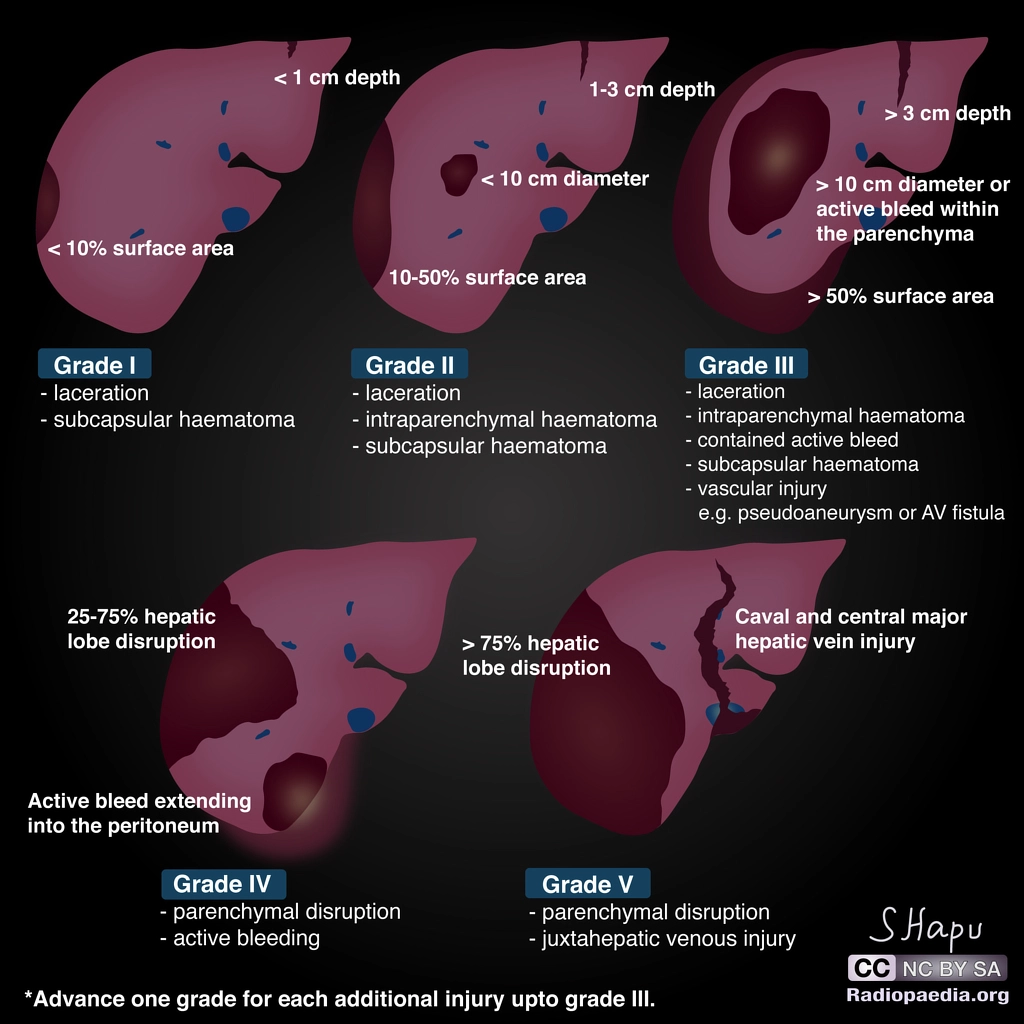Table of Contents
- Density of fluids
- Grading renal injury
- Grading liver injury
- Grading splenic injury
- Urethral injury
- Bladder rupture types
- Adrenal washout calculator
- Liver segments
- Pancreatitis
Trauma
Radiology Assistant: CT in Trauma
AAST Injury Scoring Scales (all organs)
| Fluid | Hounsfield Units |
|---|---|
| Simple Fluid | 0-10 |
| Bile | -80-20 |
| Urine | 0-20 |
| Contrasted Urine | 80-200 |
| Unenhanced Clotted Blood | 30-45 |
| Clotted Blood | 60-90 |
| Serum | 0-20 |
| Contrast Enhanced Blood | 120+ |
Kidney

| Grade | Description |
|---|---|
| Grade I | Subcapsular hematoma and/or parenchymal contusion without laceration |
| Grade II | Perirenal hematoma confined to Gerota fascia Renal parenchymal laceration ≤1 cm depth without urinary extravasation |
| Grade III | Renal parenchymal laceration >1 cm depth without collecting system rupture or urinary extravasation Any injury in the presence of a kidney vascular injury or active bleeding contained within Gerota fascia |
| Grade IV | Parenchymal laceration extending into urinary\ collecting system with urinary extravasation Renal pelvis laceration and/or complete ureteropelvic disruption Segmental renal vein or artery injury Active bleeding beyond Gerota fascia into the retroperitoneum or peritoneum Segmental or complete kidney infarction(s) due to vessel thrombosis without active bleeding |
| Grade V | Main renal artery or vein laceration or avulsion of hilum Devascularized kidney with active bleeding Shattered kidney with loss of identifiable parenchymal renal anatomy |
Liver Injury

| Grade | Description |
|---|---|
| Grade I | Subcapsular hematoma <10% surface area Parenchymal laceration <1 cm in depth |
| Grade II | Subcapsular hematoma 10–50% surface area intraparenchymal hematoma <10 cm in diameter Laceration 1–3 cmin depth and ≤ 10 cm length |
| Grade III | Subcapsular hematoma >50% surface area ruptured subcapsular or parenchymal hematoma Intraparenchymal hematoma >10 cm Laceration >3 cm depth Any injury in the presence of a liver vascular injury or active bleeding contained within liver parenchyma |
| Grade IV | Parenchymal disruption involving 25–75% of a hepatic lobe Active bleeding extending beyond the liver parenchyma into the peritoneum |
| Grade V | Parenchymal disruption >75% of hepatic lobe Juxtahepatic venous injury to include retrohepatic vena cava and central major hepatic veins |
Spleen

| Grade | Description |
|---|---|
| Grade I | Subcapsular hematoma <10% surface area Parenchymal laceration <1 cm depth Capsular tear |
| Grade II | Subcapsular hematoma 10–50% surface area Intraparenchymal hematoma <5 cm Parenchymal laceration 1–3 cm |
| Grade III | Subcapsular hematoma >50% surface area; Ruptured subcapsular or intraparenchymal hematoma ≥5 cm Parenchymal laceration >3 cm depth |
| Grade IV | Any injury in the presence of a splenic vascular injury or active bleeding confined within splenic capsule Parenchymal laceration involving segmental or hilar vessels producing >25% devascularization |
| Grade V | Any injury in the presence of splenic vascular injury with active bleeding extending beyond the spleen into the peritoneum Shattered spleen |
GU
Urethral Injuries


| Grade | Description | Notes |
|---|---|---|
| Type I | Stretching injury to the prostatic urethra | Rupture of the puboprostatic ligaments |
| Type II | Disruption of the prostatic urethra | Contrast extravasates above the UG Diaphragm |
| Type III | Disruption of the membranous urethra | Contrast extravasates into and below the UG Diaphragm |
| Type IVa | Disruption involving the bladder neck | Surgical |
| Type IVb | Bladder base rupture not involving bladder neck | Conservative management |
| Type V | Disruption of the anterior urethra |
Bladder Rupture


NON-TRAUMA RESOURCES
Adrenal
Liver
Pancreatitis
RSNA: Revised Atlanta Classification for Acute Pancreatitis: A Pictorial Essay
Radiology Assistant: Acute Pancreatitis
